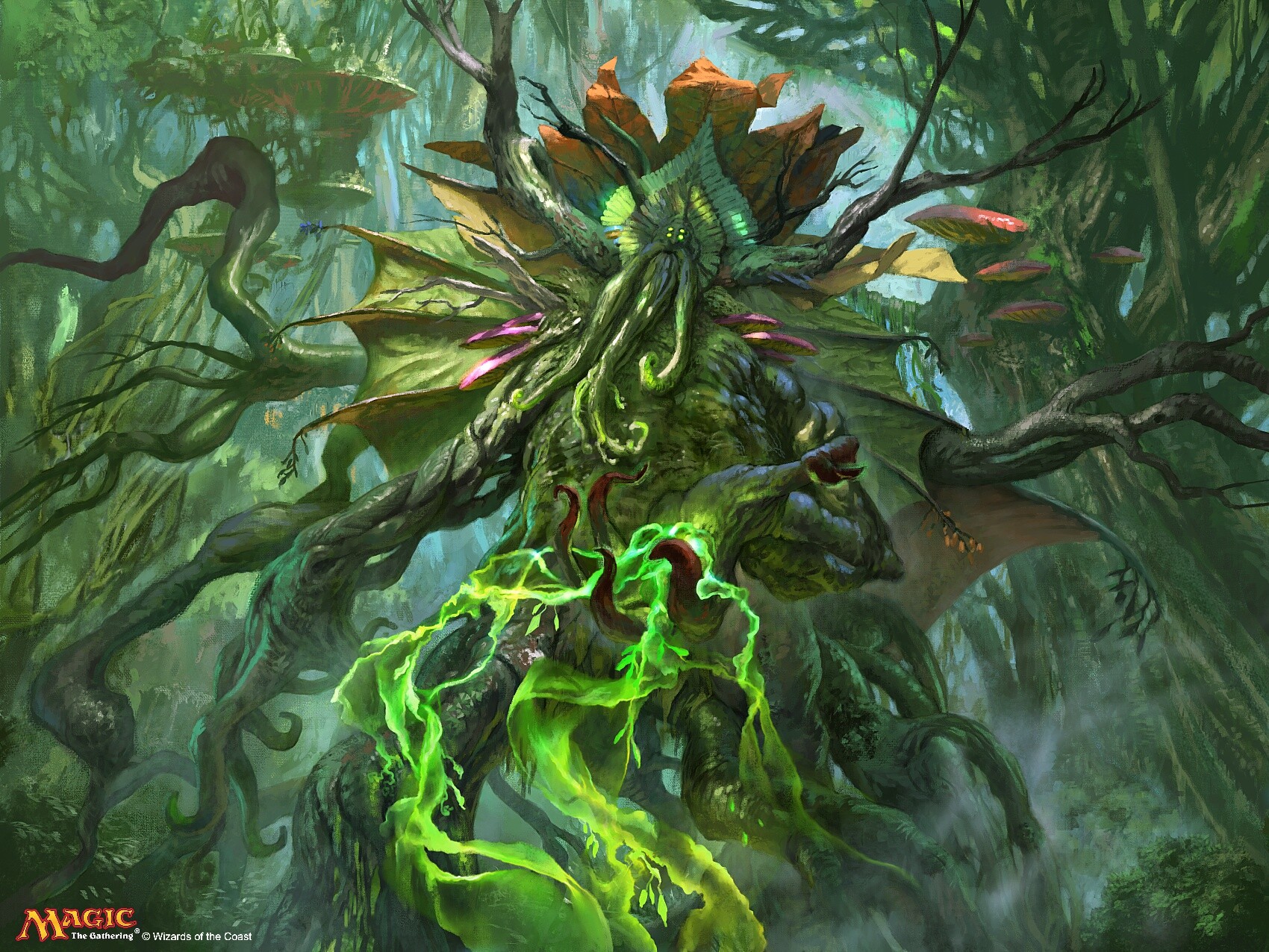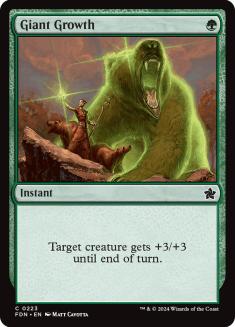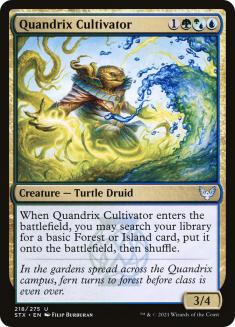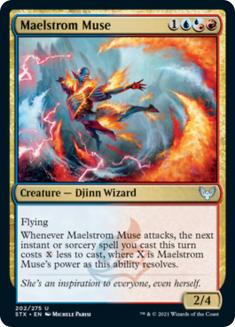Hello, and welcome to this edition of Sullivan’s Satchel. I mentioned Strixhaven in last week’s column, and the previews seem well-received by all accounts blah blah blah, but what has struck me was the degree to which people seem to associate with the lore and world-building. I had some reservations in this space; the Ravnica guilds have done so much to define the two-color preferences and definitions of players, and I had my doubts about anything similar being able to chisel into that space a little bit.
Turns out I was wrong. A lot of what defines Ravnica is “What job do you have?”, while Strixhaven is more anchored in “What do you like to learn?”, and it turns out that a lot of people more strongly associate themselves with the latter rather than the former, which is cool and probably healthier. (I identify much more with the former, probably to my detriment.)
I’m very much enjoying the array of stuff I’m doing for Star City Games. Some of the Magic stuff feels a little rudderless without physical tournaments, but that’s starting to seem tenuously in sight and the lull is fertile ground to unpack old designs and sets, which is what a lot of my other content in centered around. I’m starting to get the itch, probably in part because I have been fortunate enough to receive my first vaccine and have the second one slated for the end of this month. I think it’s easy to assume your experience reflects some overall trend and there’s a good chance that physical events are still a ways out, but I think objectively there’s cause for some hope, too.
With that, the questions. As always, you can send in yours to [email protected] or DM me on Twitter @BasicMountain. One among them will win Question of the Week, along with $25 in SCG credit, the last of mine being emptied out on some Bob Ross basics, for those of you curious.
From rickmgardner:
I love receiving questions from people who self-identify as “new.” I remember reading stuff on The Dojo back in the 90s when I was getting turned on to things and it felt like every piece of information I received was a gift, or some great truth being unlocked in front of me, and it’s gratifying when someone in that position would reach out to me. Keep ’em coming.
“The stack” broadly refers to two things interchangeably — the act of casting a card, using an activated ability, or generating a trigger such that you and the opponent have an opportunity to respond (X is on the stack) or when the stack contains two or more such spells, abilities, or triggers (“With your Prowess trigger on the stack, Wild Slash your Monastery Swiftspear.”)
In ancient times, combat worked differently such damage went “on the stack,” locking in the damage each creature would deal, sort of, and then giving people an opportunity to do stuff before it went “off the stack.” This system was really great assuming the game was only ever played by robots, and hasn’t been part of the rules for over ten years, I believe. Still, you may have heard older players reference it at points; it is no longer part of the game.
In terms of “taking advantage of,” the last thing that goes on the stack resolves first. That means responding to a Giant Growth with Lightning Bolt to kill the targeted creature, or responding to a Lightning Bolt with a Giant Growth to save the targeted creature, are both commonly powerful things to do. In this system, the person who acts first is assuming risk — if the other player has the right response, the initiating player often loses multiple cards, mana, tempo, or some mix of all of it. What that means is the following:
An important tactical element of Magic is knowing ahead of time if you’re the party that must initiate the action or otherwise assume risk, your comfort level in assuming that theoretical risk, and navigating the game into places where that risk is foisted onto your opponent. If you have a 5/5 and a Shock in hand and your opponent has two 2/2s, there’s rarely a reason to Shock one before attacking with your 5/5, if that’s a thing you want to do.
If your opponent offers up a double block, they still need to take another action before they’re at risk of killing your 5/5, and then your Shock has a chance to clear out everything. Maybe if you’ve seen some instant from them that deals one damage and you’re worried about a double block plus that post-combat you should use your Shock up front, but in general that’s the type of spot where your opponent is compelled to act first, and you should let them, rather than opening up with a Shock pre-combat (a common mistake with novice players, especially at the Prerelease level).
The example gets trickier if they have a 3/3 and a 2/2, plus cards in hand and open mana. If your opponent double-blocks and you’re happy with a no-risk trade, you may not even want to pull the trigger on the Shock — after all, it could be useful later, and if your opponent has something to counter or otherwise cast over the top of your Shock you could end up losing a lot in exchange for very little, or nothing at all. And if your opponent double-blocks and casts a trick, there’s a chance the Shock can get everything. You can “clarify” things pre-combat by Shocking the 2/2, but that takes the “double block, Shock your 2/2 and eat your 3/3” line off the table (assuming you’re willing to do that if they double block.) If they use a pump spell in response to save it, you can take a turn off and not attack, and maybe take a shot the following turn.
These examples aren’t exhaustive and there are carve-outs and exceptions to all of it, particularly because the specific cards either player can have inform so much of the decisions, but as a heuristic, try to be the player who acts last, as much as possible.
From Ben Seitzman:
I don’t know if you’re missing anything. If nothing else, I think there’s value in doing different stuff just for the sake of being different, assuming there isn’t any harm, and I think there’s some low-level novelty in blending gold requirements with hybrid, since you normally see only one thing or the other.
I actually like the mixing from a balance perspective. Gold can be too prohibitive and hybrid is actually easier to cast than monocolored cards. I think mixing is really good from an incentives and gameplay perspective — you have to “mean it” to play with the cards but there are a lot of ways to go about meaning it. If you’re doing some snow thing with Faceless Haven, maybe you can’t cast them reliably, but any dedicated two-color deck should have no trouble. That sounds like a good landing spot to me.
I wouldn’t try to read too much into the flavor or tone being communicated by the colored mana symbols. There are the occasional Lord of the Pit / Force of Nature designs or cycles where the symbols are meant to communicate something or strike a certain tone, but for the most part it’s a blend of balance and desire for variety for its own sake that informs the majority of colored mana symbols. I think the designs you called out are slightly more stimulating with the weird gold / hybrid split than they would be otherwise, and all other things being equal that’s a powerful tiebreaker.
From Reggie:
I find most of the Upper Deck stories more charming than anything else at this point but I don’t know if I’d feel differently if I hadn’t landed on my feet after the whole thing blew up. In any event, none of the principal characters in any of these stories still work there and my industry golden rule is “always take the call” so I’d never rule anything out. I’m tight with some of the people who work on their stuff and working as a remote contractor is a lot more about the people you’re immediately in contact with than the overarching company, anyways. I’m owed a few hundred in per diems I got chiseled out of for not having my receipts perfectly in order after working some miserable conventions so we’d have to get that squared away before we could negotiate in earnest.
Lastly, the Question of the Week and winner of $25 in SCG credit, from Buert B:
The starting point for me is how invasive the perceived problem is, or how unlikely it is that it can be handled by an aggregation of “nuts and bolts” gameplay from the opponent. To your example about four- and five-color decks, those aren’t a “problem” in the abstract — absent other information, there’s no reason to think they’d play poorly or create a bad experience for the other player. The issues are those of balance (maybe) and the color pie being cool, so an oversaturation of five-color decks dampening one of the key selling points of Magic. To that I say:
- Give mono- and two-color decks some love. There are a ton of ways to do this, like single-color payouts (Torbran, Thane of Red Fell); powerful colorless lands (Mutavault); or duals that are especially good for decks that play basics or otherwise don’t play well in five-color shells (Glacial Fortress). It’s generally more fun and higher-yield to just give different decks their own stuff with their own strengths and weaknesses and hope it sorts itself out than trying to “nerf” something out.
- Find stuff with utility in a broad sense that may be especially good against the thing your concerned about. Cards like Field of Ruin or Anathemancer have text boxes that do stuff in “regular” games that may have special context against decks with strained manabases. I think Blood Moon is several steps too far, both in how good it is against the “target” and the splash damage incurred by people you aren’t really trying to hate out. There can be extraordinary circumstances that justify a measure as powerful and heavy handed as Blood Moon, but those situations are probably managed by bans the vast majority of the time.
Once you’re talking about decks with intrinsic play pattern issues and not just a general concern about balance, more pointed or hostile measures are appropriate. Decks that exploit a zone that people aren’t equipped to engage with in most Game 1s (Dredge) or decks that kill from hand quickly and/or from a low base (Storm, Burn) have a habit of reducing games to unsatisfying binaries and it’s reasonable to give the “honest” player powerful tools to fight back against decks that homogenous and exploitative.
Put another way, I don’t think it’s wise to make a card that’s as powerful as Eidolon of Rhetoric is against Storm or Burn, or Leyline of the Void against Dredge, for someone who is just attacking and blocking with stuff even if their deck is powerful, but I think the aforementioned cards (and more, and maybe even stronger) are appropriate responses to a certain class of deck.







